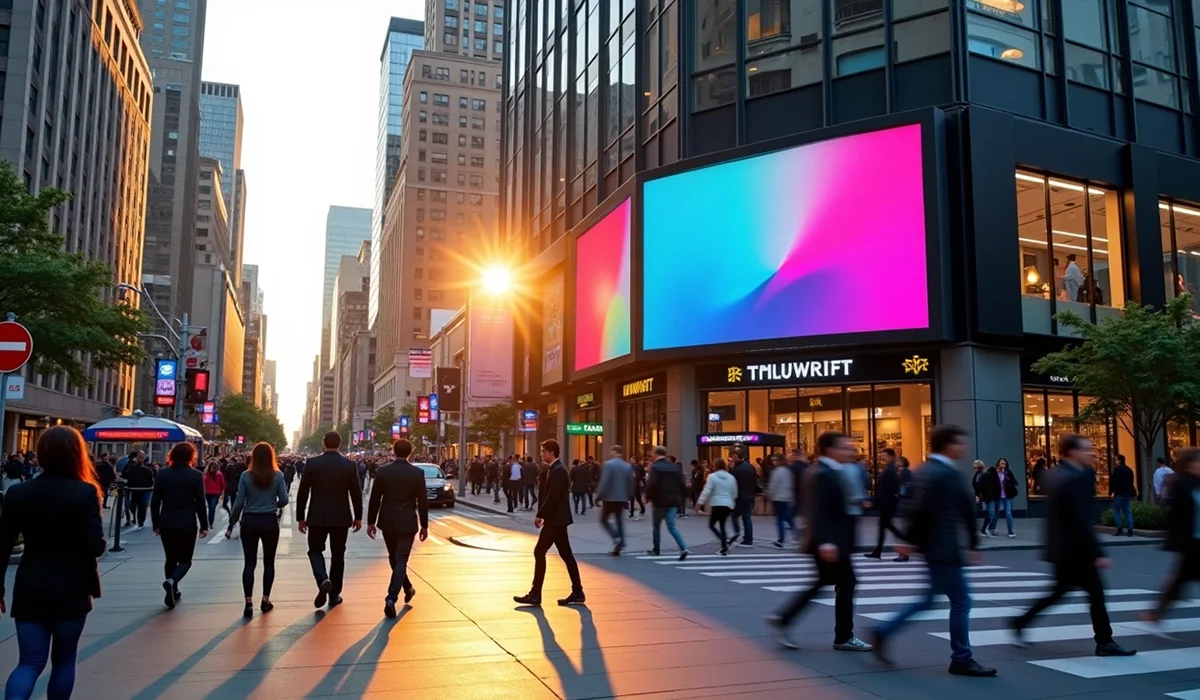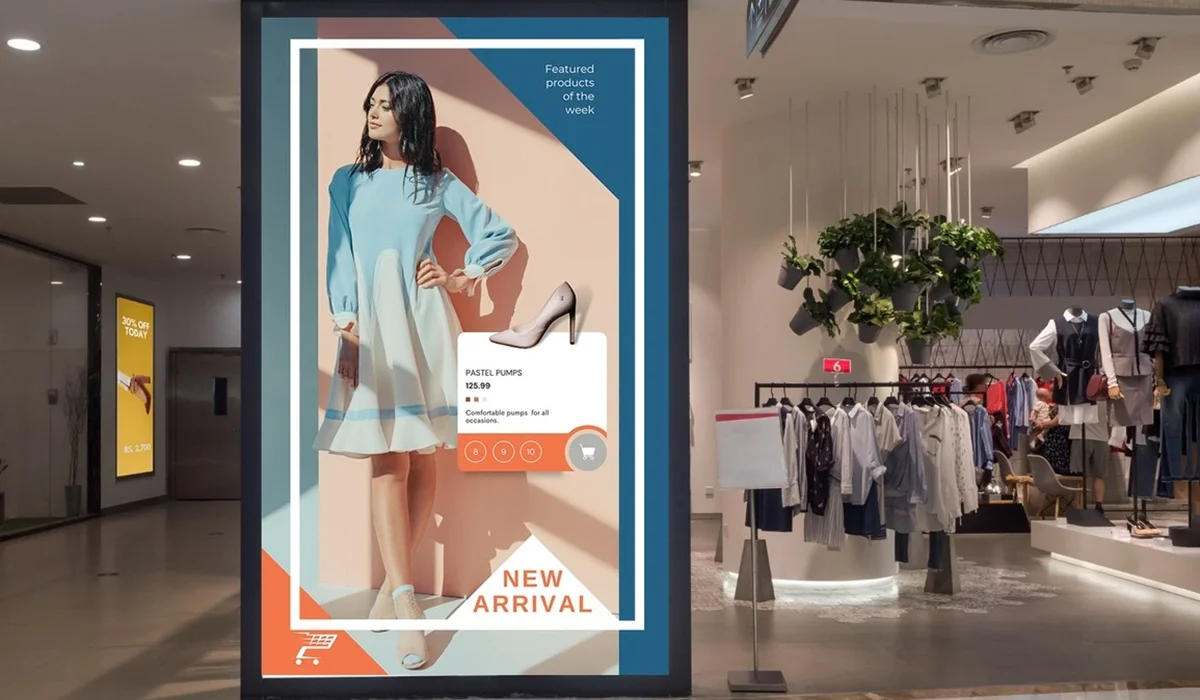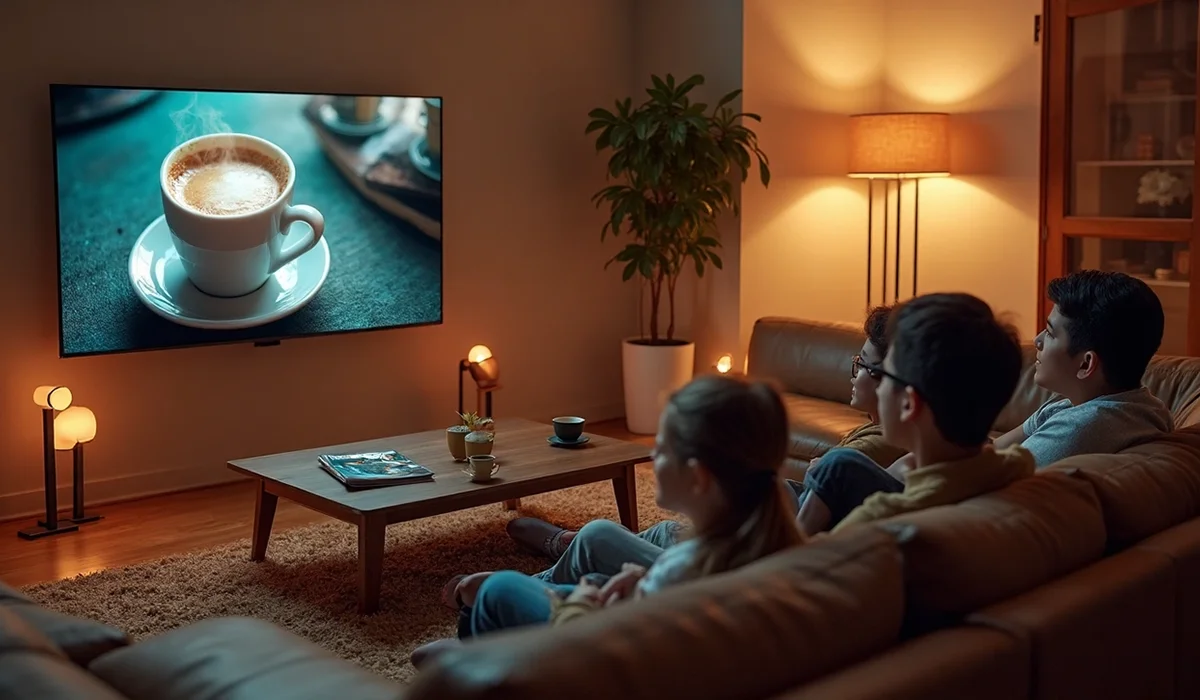Modern B2B buyers complete 57% of their buying process before their first meeting with a representative. This statistic tells us something important about advertising spots: your venue’s potential customers make their decisions long before visiting your location.
Your venue might be outstanding, but empty seats will follow if nobody knows about it. Smart event advertising becomes crucial for busy venues like yours. The best advertising spots use high-traffic areas that thousands of people visit each day, which gives your brand maximum exposure. The rise of digital screens and technology has made choosing the right locations more complex but also more effective than ever.
This piece will guide you through the world of advertising spots with confidence. You’ll learn to pick prime locations and time your promotions just right. We’ll show you how to create advertising that grabs attention and brings measurable results for your venue.
Understand the Role of Location in Advertising Impact
Location is the foundation of any successful advertising strategy. Creating eye-catching content matters, but your advertising spots’ placement determines if your message reaches the right audience at the right time.
Understand the Role of Location in Advertising Effect
Your advertising spots’ strategic placement affects not just how many potential customers see your ad, but also who these viewers are and what actions they take afterward. The connection between location and effect can substantially improve your venue’s visibility and attendance when done right.
Why location matters for visibility
Visibility is the life-blood of effective advertising. A well-positioned ad in a high-traffic area boosts brand exposure and recognition substantially. Immediate analytics now let advertisers track both pedestrian and vehicular traffic patterns to ensure ads appear before the right audience at peak times.
These location factors maximize visibility:
- Clear line of sight – No obstructions like trees or buildings should block your ad
- Elevated positions – Ads placed higher catch more eyes, especially in busy urban areas
- Traffic speed considerations – Pick locations where traffic naturally slows down or stops to provide longer viewing time
Billboards should be positioned within 50 meters of the viewing point so people can easily grasp your message. Areas with heavy vehicle and foot traffic—such as shopping districts, pedestrianized streets, and public transport hubs—provide maximum exposure to your target audience.
The surrounding environment plays a vital role. Your advertising message might get lost in a location filled with competitors’ ads. Your ad near complementary businesses can boost performance—to name just one example, event advertising near entertainment venues.
How foot traffic influences ad performance
Foot traffic means more than just passing bodies—it’s a vital part of the customer’s trip. Many businesses focus on online metrics, but foot traffic affects business results throughout the purchase process.
Research shows people make 83% of their retail purchases in-store. Customer conversion becomes easier once potential buyers enter your doors. People who saw advertising were 53% more likely to make five or more visits than those who weren’t exposed to ads.
Foot traffic offers multiple benefits that boost advertising performance:
- Social proof – Busy venues signal popularity and attract more visitors
- Campaign refinement – Movement patterns help optimize future marketing efforts
- Competitive advantage – Data shows opportunities to attract customers from competitors
Location-based marketing helps organizations target consumers precisely based on their physical location. This approach works effectively in a variety of customer lifecycle stages—from discovery and purchase to involvement and retention.
Foot traffic data enables smarter business decisions about future advertising spots beyond immediate sales. You can refine strategies for better results by analyzing locations that generate the most involvement. Finding optimal sites for new advertising based on foot traffic patterns removes uncertainty and maximizes return on investment.
Smart marketers who understand location’s effect on visibility and foot traffic’s impact on performance create advertising that attracts attention and drives measurable results for busy venues.
Know Your Audience Before Choosing a Spot
The success of your advertising depends on how well you know your target audience. Your compelling content won’t matter if it doesn’t reach the right people. The way you place your ads at the time of planning will determine how well your venue connects with potential visitors.
Know Your Audience Before Choosing a Spot
Use audience segmentation tools
Audience segmentation splits your target market into specific groups that share common traits. This helps create messages that build stronger connections. You’ll get better results by targeting specific groups instead of showing the same ads to everyone. Segmentation tools help you create customized experiences that strike a chord with different audiences.
Today’s segmentation platforms give you pinpoint accuracy in targeting:
- CRM systems organize customer data to customize campaigns
- Customer Data Platforms (CDPs) centralize information from various sources
- Marketing automation platforms track involvement across channels
This targeted strategy pays off handsomely. Companies that use segmentation see 14% higher open rates and click-through rates jump by 101%. The numbers tell a clear story – 76% of consumers are ready to buy from brands that customize their messages.
Smart segmentation looks beyond simple demographics and scrutinizes:
- Behavioral patterns (purchasing history, engagement frequency)
- Geographic considerations (location, regional priorities)
- Psychographic factors (interests, values, lifestyle choices)
Track movement patterns and behaviors
Geolocation data has become the crown jewel of digital advertising. Advertisers learn about where people go, their stay duration, and frequent visits through mobility tracking.
Movement data shows much more than just location – it reveals what consumers truly want. To name just one example, gym visitors often shop at health food stores, which creates natural opportunities for wellness brands. The data also shows which customers visit competing venues, helping create messages that attract them.
Mobility analytics help segment audiences based on real behaviors instead of guesses. These insights point to the best advertising spots by showing high-traffic areas and busy times. Nielsen research proves that location-based ads work 20 times better than traditional advertising to involve consumers.
Match ad timing with audience routines
Your advertising works better when you reach people at the right time. Different platforms and groups show varied peak hours. Mobile users are most active during commutes and lunch breaks, while desktop usage peaks during work hours.
Jobs and industries shape the best timing for ads. B2B companies see better results during business hours. Entertainment venues get more attention during evenings and weekends.
Location plays a big role in timing strategy. Time zones and cultural differences change how people interact with different ad types. City audiences use mobile devices more than suburban users who prefer desktop content.
Digital out-of-home advertising spots need perfect timing. Foot traffic data reveals hourly and daily patterns that show exactly when your target audience passes by your ads. This detailed approach ensures your message reaches people when they’re most likely to notice it.
Choose the Best Advertising Spots for Maximum Reach
Strategic placement makes advertising work better. Your advertisement’s success depends on picking the right physical locations after you understand your audience. Let’s head over to the most effective advertising spots that bring maximum reach in busy venues.
Choose the Best Advertising Spots for Maximum Reach
Highways and intersections
Highway and intersection advertising captures audiences during natural pauses in their travel. Roads that have substantial vehicular traffic create continuous exposure to different audiences. Traffic that slows down or stops at intersections, congested streets, or highways gives viewers more time to absorb your message.
Your highway location selection should focus on these key factors:
- Traffic volume analysis: LA’s I-405 and Chicago’s Kennedy Expressway give prime exposure because of their notorious traffic
- Viewing time: Pick spots where vehicles slow down or come to a complete stop
- Legal requirements: Most states need billboards to be at least 500 feet from intersections on controlled routes. Digital displays often need 1,000-foot setbacks
Digital billboards on highways follow stricter rules. Messages must stay up for 8 seconds minimum and transitions should complete in one second or less. Most regions ban traveling messages, animations, and scrolling text to keep drivers focused.
Transit hubs and shopping centers
Transit advertising places your message in high-traffic commuter areas where people wait. Bus stops, train stations, airports, and shopping centers create perfect spots for captive audience involvement. Daily commuters become engaged viewers in these locations.
Transit hub advertising gives you these benefits:
- Extended viewing time: Commuters wait several minutes, which gives plenty of exposure time
- Diverse audience reach: Both locals and visitors come to transit hubs, giving widespread visibility
- Captive audience: Waiting passengers focus better on your message with fewer distractions
Shopping centers attract consumers who are ready to buy, which makes them perfect for influencing purchase decisions. Many transit hubs now use programmatic capabilities to target based on time of day or vehicle data.
Event venues and entertainment zones
Entertainment districts have become immersive advertising spaces where digital signage adds to the visitor’s experience. Mixed-use venues like Live! Casino & Hotel and L.A. Live! make use of LED screens for concerts, comedy shows, and interactive experiences.
Modern entertainment venues build digital display technology into their architecture. LED systems connect through large networks to show synchronized advertising, directions, and artistic content. These venues blend different elements—dining, media, architecture—to create energetic spaces where advertising feels natural.
Digital screens do more than just advertise in entertainment zones. Large-format LED displays show artistic content while touchscreen kiosks help visitors find their way. These technologies improve rather than interrupt the visitor’s experience. Visitors engage more deeply with this approach compared to traditional advertising spots.
Design and Screen Quality: Make Your Message Stand Out
Your advertising display’s visual quality determines if your message fascinates viewers or just blends into the surroundings. The best strategic placement becomes ineffective without screen specifications that match your environment.
Importance of screen size and brightness
Screen resolution affects advertising effectiveness directly. Higher-resolution billboards create 45% better recall rates compared to lower-resolution options. Sharp images help communicate messages better when viewers have just seconds to absorb information.
Screen brightness, measured in nits (cd/m²), plays a vital role in visibility. Different settings need specific brightness levels:
- Indoor displays: 400-700 cd/m²
- Semi-outdoor displays: >2500 cd/m²
- Outdoor displays facing north: >4000 cd/m²
- Outdoor displays facing south (direct sunlight): >7000 cd/m²
Outdoor LED displays usually run at 8,000-10,000 cd/m² to stay visible in bright sunlight. A Nielsen report shows that 67% of consumers link higher visual quality to brand credibility.
Optimizing for viewing angles and distance
Viewing angles show the maximum range where viewers see clear images without distortion or color fading. These angles measure in degrees from the display’s center and include both horizontal (left-right) and vertical (up-down) values.
Digital billboards work best at a 45-degree viewing angle. This angle lets drivers see messages clearly while they focus on the road. Indoor displays benefit from wider 120°-160° viewing angles because viewers stand closer and move around more.
The height and physical tilt of your display make a big difference. Wrong angles can make images look dim from certain viewpoints. Billboards should be within 50 meters of the main viewing point to maximize readability.
Examples of high-performing digital screens
The best outdoor displays use 6mm-10mm pixel pitch in pedestrian areas. Highway billboards work well with 16mm-20mm pixel pitch for longer viewing distances. Displays with at least 10mm pixel pitch show 20% higher engagement rates than those with 20mm or more.
Today’s screens come with automatic brightness sensors and advanced thermal management systems. These features help maintain perfect visibility as conditions change. IP-rated waterproof enclosures (usually IP56 or higher) keep the screens working well whatever the weather throws at them.
Time Your Ads for Maximum Engagement
Smart timing can turn average ad spots into high-performing assets that align with audience behavior patterns. Your message reaches viewers at their most receptive moments through well-planned scheduling.
Time Your Ads for Maximum Engagement
Best times of day for different audiences
Dayparting splits the day into segments to schedule ads strategically and this approach works wonders for campaign success. Professional audiences respond well to ads during morning commutes (5:00 a.m.-9:00 a.m.) and lunch breaks. Evening hours (5:00 p.m.-9:00 p.m.) catch consumers in a relaxed state. Commuter patterns create predictable windows of engagement in transit locations. Early morning and late afternoon offer prime visibility opportunities.
Weekday vs weekend ad performance
Ad performance shows clear differences between weekdays and weekends in many industries. Monday’s online retail earnings top the charts, and businesses see 15% higher conversion rates on weekday mornings. The performance gap between weekdays and weekends can be huge – some venues report differences of over 100%. Setting up separate campaigns with distinct budgets for weekdays and weekends makes more sense than using one approach all week.
Seasonal and event-based timing strategies
A three-month lead time ensures the best placement and creative development for seasonal campaigns. Winter campaigns deliver the strongest retail engagement, with autumn’s back-to-school period coming in second. Event advertising needs clear timelines:
- Simple virtual events: 2-3 weeks prior
- Webinars and panels: 3-4 weeks ahead
- Large-scale product launches: 6+ weeks minimum
Live performance data helps automated tools adjust schedules and maintain consistent ad presence during seasonal periods.
Conclusion
Strategic advertising spots are the foundations of successful venue promotion. This piece explores how location, audience understanding, and timing work together to create advertising that delivers real results for your busy venue.
Your most critical decision will be picking prime advertising locations. High-traffic areas with natural stopping points give potential customers time to absorb your message. Understanding foot traffic patterns helps you fine-tune campaigns for maximum effect.
Audience segmentation turns generic messages into tailored experiences that appeal to specific groups. This targeted approach boosts engagement rates by a lot and ends up bringing more visitors to your venue.
Screen quality definitely needs careful thought. The right resolution, brightness, and viewing angles make your message stand out in any environmental conditions. High visual quality links directly to brand credibility, making this technical aspect much more important than many venues realize.
Timing brings all these elements together. Your well-chosen location and beautifully designed ad won’t perform well unless shown at the right moments. Different audiences participate during different times of day, while weekday and weekend performance varies dramatically in many industries.
Seasonal and event-based strategies need advance planning. Creating separate campaigns with different budgets for weekday versus weekend implementation works better than using one approach throughout.
The best venue advertising mixes all these elements – strategic location, audience understanding, quality design, and perfect timing. By doing this and following the guidelines in this piece, you’ll create advertising spots that catch eyes and fill your venue with eager customers.
Put these strategies to work today and you’ll see the difference in both foot traffic and revenue. Your venue deserves attention – these proven advertising approaches will make it happen.



